There was a time when the customers visited a store to buy a product, but they found the product out-of-stock. The whole zeal of customers for the upcoming new product gets thrashed. It would have been so good if they could order it in advance (preorder)
Online merchants also face the same condition when they run out of their product’s stock or are about to launch a new product in their store. So, until the products are back in stock, there is a hold phase on the sales. But that was the past. Today’s merchants can leverage the “preorder” functionality to keep their sales rolling.
Preorders would have never been so popular, versatile, and effective as they are today. Post a product’s image with its short description in the morning, and by the sun sets, hundreds of orders are validating or even funding the product launch. There are various reasons to use a preorder feature in your e-commerce store. They positively affect your cash flow, the flexibility of the product launches, and the risks they can offset. For selling preorders of a product on a product, you have to go through many different aspects. This article will go through every part of a preorder, its types, and how to run a successful preorder campaign in your store.
Preorder: An Introduction
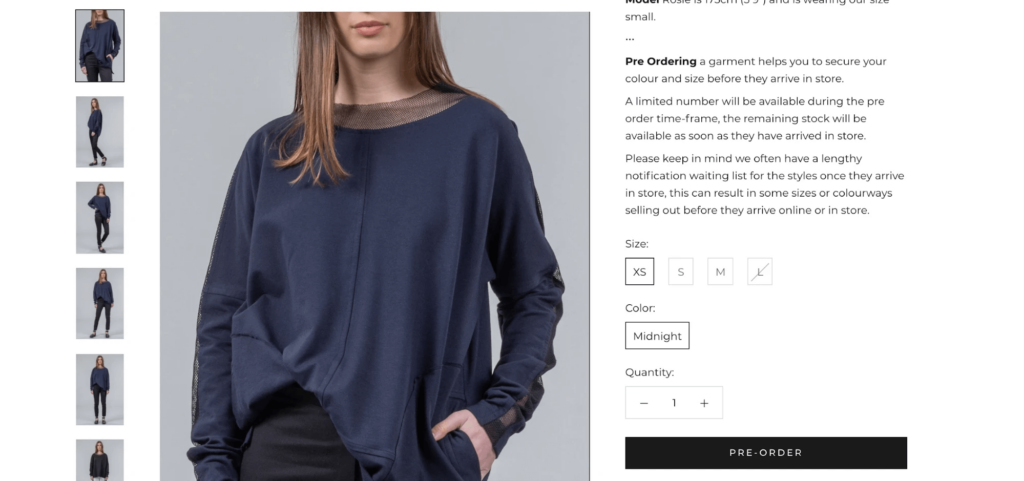
When the customers can make an order for a product that hasn’t been released yet or is out of stock, it is called a preorder. Preorder allows customers to create products before they are available. . The product will be shipped to the customer once it is available in stock.
Many companies can use the preorder features, from startups to large companies to small boutique businesses. But different types of preorders are used for different scenarios. A startup that requires money for its manufacturing run will have additional requirements than an established brand that wants to test, validate, and capture demand for its next release. Should you offer preorders?
There is a considerable risk and capital involved in selling physical goods. The manufacturers spend thousands of dollars in developing these physical products and inventory, which may or may not sell, all based on gut feeling and confidence that the product will work in the market. But if you capture preorders upfront before investing in manufacturing, it can be an invaluable approach to validate your product.
Preorder is like an agile approach in which the production and sales are going on simultaneously. The other significant reasons why e-commerce retailers choose to offer preorders on their online store for certain new products are:
1. Gauge Demand
You can forecast the demand of your product by collecting preorders and also analyze what quantity of the product you should manufacture or order, depending on the manufacturing model. With the Gauge Demand marketing strategy, you can estimate the product’s sales for preorder products and avoid overproduction issues.
2. Limits Financial Risk
As we already mentioned above, the production of goods or products involves a lot of money. For this, you require a considerable amount of money. With the preorder feature, the customers will already make payment, and you will have the funding to manufacture or purchase products from the suppliers. It is beneficial for newcomers looking for an alternative to borrowing money from a financial institution to buy or simulate products.
3. Generate zeal with Preorder Marketing
If you are already an established brand, then preorder can eliminate the high costs of advertising. Preorder can create hype around your store and the product. It works best if you use the scarcity principle and only offer a certain number of products within a limited period.
When the customers get products by preorders, they will feel special and like trendsetters which can create a buzz in both the online and offline market through social media and mouth marketing, respectively.
How To Set Up Pre-Order On Shopify?
However, the steps to set up pre-order on Shopify depend on the Shopify app you choose to set up pre-order products. Still, we have uncovered general steps to give you an idea.
- Go to your Shopify admin.
- Click ‘Products’ and select the products you want to manage.
- Optional:
- Select or deselect the option ‘Only show this product with these purchase options.’
- [This way, you can choose to sell those products exclusively as a pre-order or with one-time purchases.
How to add a pre-order button to Shopify?
First, you need to install a preorder app from the Shopify App Store and then manage preorders in the shopify admin.
Follow the below steps to add a pre-order button to Shopify.
- On the best pre-order app Shopify (you downloaded), go to the product page and click Manage.
- Choose Select Preorder.
- Create a pre-order product page template.
- Go to Online Stores, then Themes.
- Choose Actions for the theme you want to edit.
- Click Edit Code
- Go to Template and choose Add a new Template.
- Choose a product from the dropdown menu.
- Name the template as Pre-order.
Which Preorder Method Is Right for You? Pay Now vs. Pay Later vs. Crowdfunding
There are 3 major categories of preorders among which you can anyone to your customers:
- Pay now preorders: It is the most commonly used preorder method. It is like the standard purchase method but with a longer shipping timeline.
- Pay later preorder: In this method, the customers will make an order but pay in the future. Also, both the sellers and buyers understand that any one of them can back out from this deal as money hasn’t been exchanged yet.
- Crowdfunding: In this method, the crowdfunding sites such as Kickstarter allow brands to list their pre-production products with an estimated delivery time (mostly weeks or months, not days), understanding that they will charge the customers after fulfilling preorders.
1. Pay Now Preorders
This preorder method allows customers to process payment right away at the checkout, just like a regular purchase. But the “Buy Now” button will be changed to the “preorder” button with additional information on the delivery process. You can say it is like reserving the product for yourself in advance by complete or partial payment.
Benefits
- Advanced payment will improve the cashflow
- You can capture the customers for existing products that are out of stock but will be available on a particular date
- You can even set automation in preorder feature such that whenever a product is out-of-stock, it will start taking preorders.
- There is always an option of displaying additional information (like shipping)
Demerits
- If regular orders are mixed with preorders in the cart of the customer, then it can complicate shipping costs and create communication issues.
- Not highly suitable for longer lead times as customers have made advanced payments. Any shipping delay can tarnish your brand reputation
2. “Pay later” Preorder
The Pay later preorder works similarly to the Pay Now preorders; however, in this method, preorders are kept in a separate system until you are ready to collect the payment. At this instant, the payment links or notifications will be sent to customers by which they can complete the order.
Benefits
- It is easy to capture orders from this method as customers’ aren’t charged until you are ready.
- You can test new products by a preorder and charge the customers only if you receive enough orders.
- You can choose when to charge, i.e., whether that’s before or after you order from the suppliers
Demerits
- You will not get the payment right away
- Many customers who may not be serious about the product can still make preorders as they aren’t charged. Thus, not all preorders will convert at the final payment moment.
- Out-of-stock products aren’t automatically listed as a preorder.
3. Crowdfunding
Kickstarter popularized this method based on the idea of a “crowd” of people funding a new project or product. This is just the opposite of the traditional bank or angel investment method. The investment takes the form of preorders with an extended delivery time (generally 6+ months). The deal is mainly showcased through a campaign page showcasing its features, how it matters, and why you require the investment. The process will be facilitated by a platform or any 3rd party app.
Benefits
- The campaign will validate your company or your idea as you can set a threshold that the campaign should reach before fulfilling orders.
- The upfront money that you will receive can fund the production.
- For the first product launches, it is pretty good as fulfillment time of 6 months will make the campaign normal.
- 3rd party apps are ready to promote you to their audience
Demerits
- Not the best idea for incremental product releases. Best suitable for only new ideas and companies
- If you are using a 3rd party platform, more efforts have to be put into setting up a great campaign page.
- Crowdfunding platforms take a commission of nearly 5% apart from transaction fees.
How Do Preorders Work in Shopify?
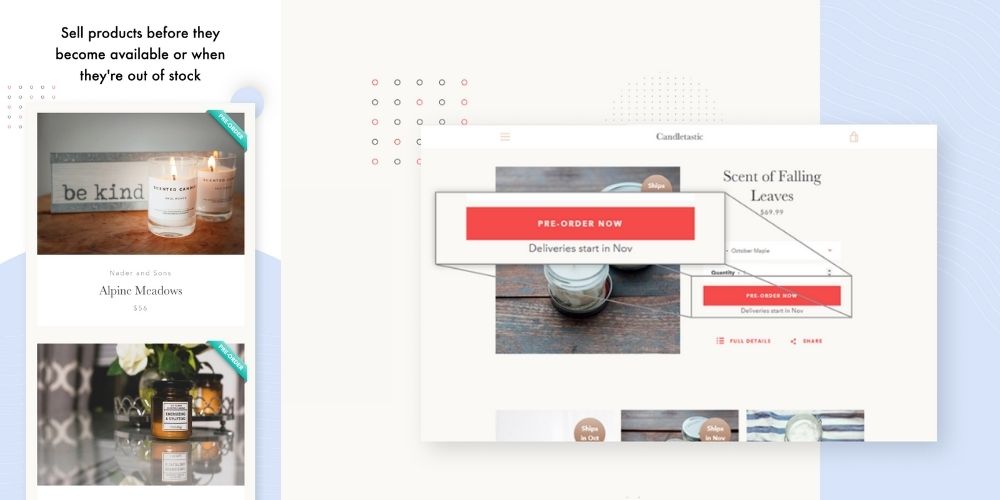
The best way to implement a preorder functionality in your Shopify store is by installing a Shopify app that meets your requirements to run a robust campaign. The core of most preorder apps relies on the fact that the selected product is a preorder selling and will not be shipping out until later. It is showcased by swapping the buy button with a preorder button.
After capturing the preorders, they will be either collected in the order management system of Shopify or the dashboard of your preorder app, depending on whether the preorder has passed through the checkout yet.
The general functionality of the preorder apps is revolved around:
- Which product/variant will be preordered and under what conditions (e.g., zero stock, specific variant, time limit, etc.)
- Design of the button
- Conversion optimization features
After installing the app, you will access the app within the “apps” section of the Shopify dashboard and start creating listings. The app will get configured as per your choices and the theme of your Shopify store.
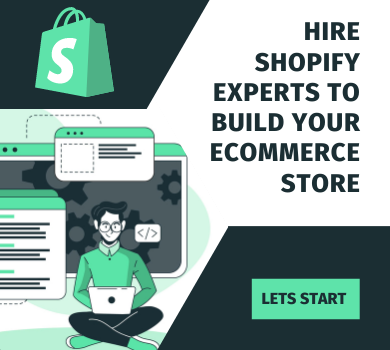
Preorder Apps for Shopify Store
Here are a few popular preorder apps for your Shopify store:
1. Preorder Now
This Shopify app will automatically swap the “Add to cart” button with the “preorder” button. The controller will get change for out-of-stock products and upcoming products. The app’s extra features are badges, e-mails, tagging, mixed cart alerts, and discounts.
2. PreProduct
This is a “Pay Later” preorder app based on testing and making sales for future products. With this button, you would be able to capture effects at any instant of the production process, and the payment links will be sent when the products are ready. Some extra features are a customizable e-mail campaign, preorder analytics & management, and a customizable cart.
3. PreOrder Manager
This app comes with no theme customization and works out of the box. It allows you to manage pre-sale activities, hide “Sold Out” labels automatically, and apply discounts for preordered items.
What are the disadvantages of pre-order?
Despite so many benefits of the preorder approach, hides arrive some limitations or demerits exist that you should also consider.
1. Manufacturer/Supplier dependency
Suppose you have successfully got the preorders by the campaign with the intent of raising funds before you start production. In that case, your online business’s whole reputation & fate relies on only the manufacturer or supplier. There can be scenarios when the item will arrive late, the price changes due to external factors, or the quality change more than what you promised your customers. You have to consider all such scenarios before launching your preorder campaign.
If things go south, the buyers will be quick to blame your business which will not just result in preventable chargebacks, but you will also lose the most precious reputation.
2. Incompatible with marketplaces
If you are doing online business through popular ecommerce marketplaces such as Amazon, or eBay, we don’t recommend going for a preorder strategy. Because, unlike e-commerce platforms, you will have no control over how orders are being processed. E.g., in Amazon, if you haven’t shipped the order within 30 days, it will be canceled regardless of your preorder date. It can also lower your ratings on Amazon. The other marketplaces also have the same kind of rules.
Learn More – Shopify Dropshipping
Wrapping Up
This article has gone through all aspects of the preorder approach in online business, its benefits, limitation, implementation method, types, and much more. At Emizentech, the best Shopify development company in India, we have expertise in implementing such functionalities in e-commerce stores. We develop highly functional, intuitive, attractive, and secure e-commerce stores from scratch. Let us know your requirements.

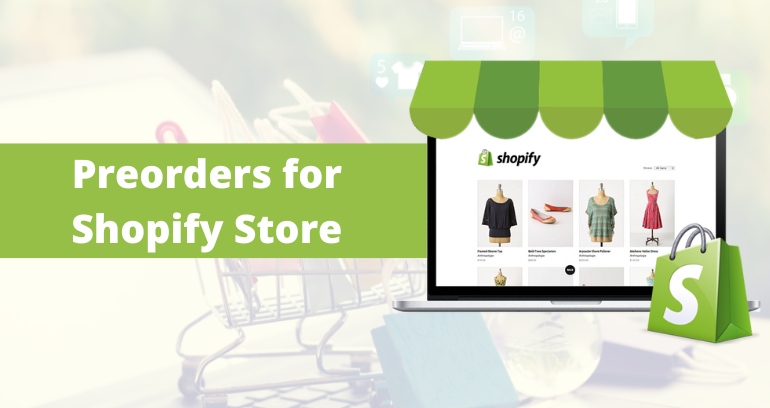
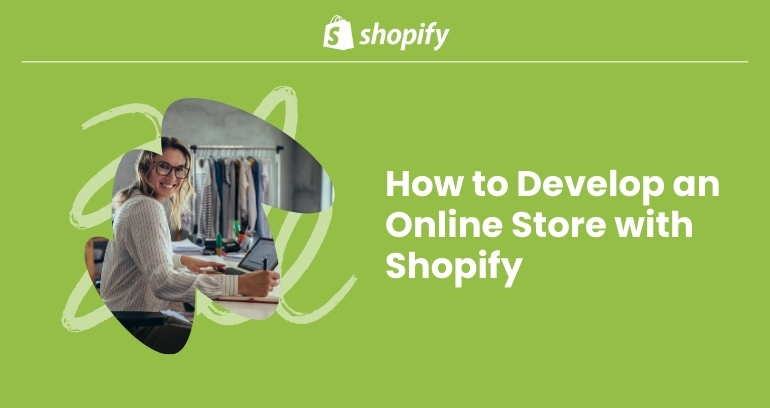
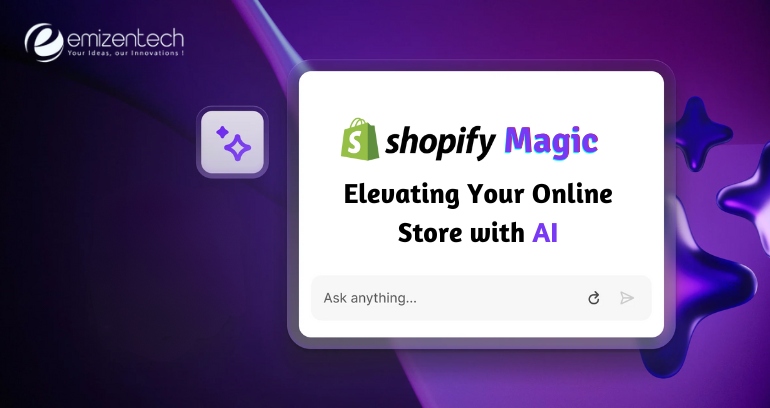
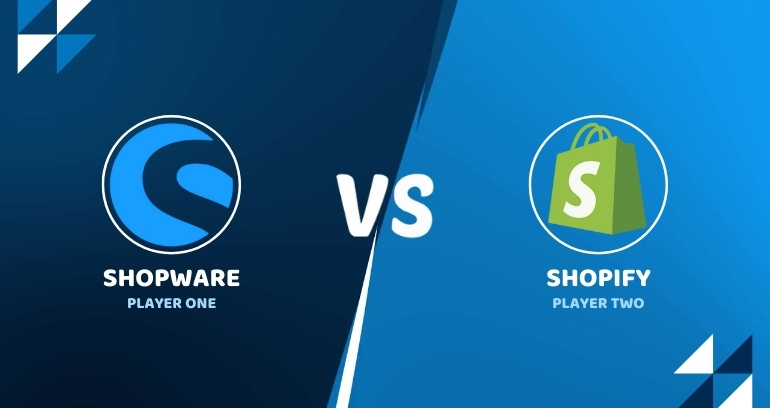
 USA
USA UK
UK